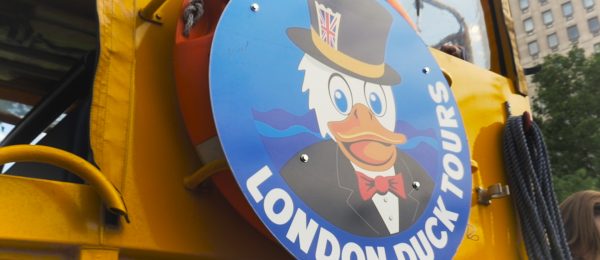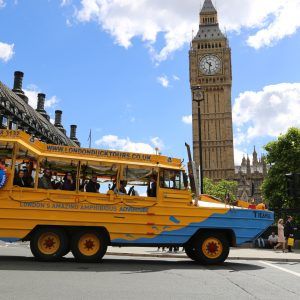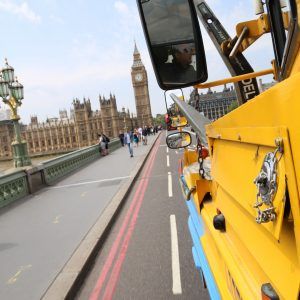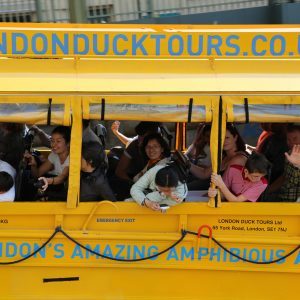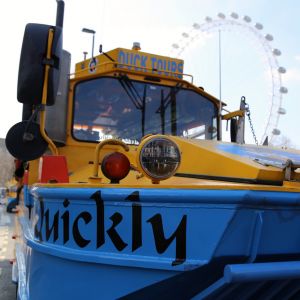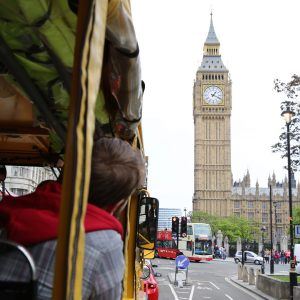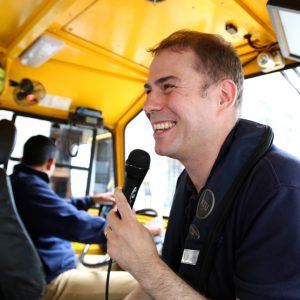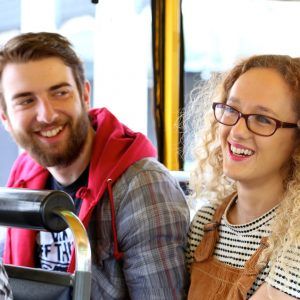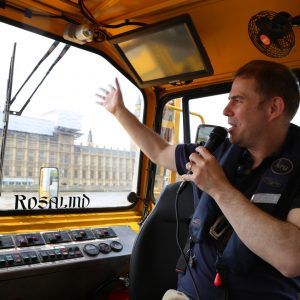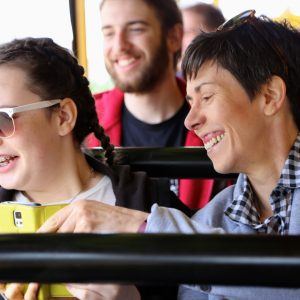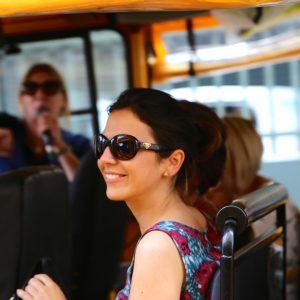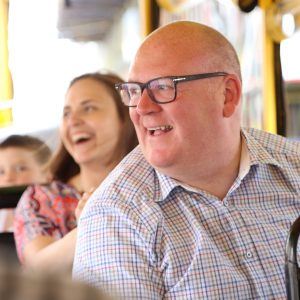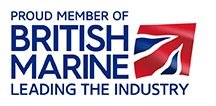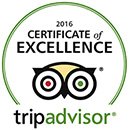London Duck Tours – where it all started
The concept of an amphibious sightseeing tour was transported to the UK from the United States back in 2000.
Current owner, John Bigos, was looking for a new challenge and bought the company in 2002. He, together with a small team, created London Duck Tours, a family owned company that has gone from strength to strength, doubling the size of the fleet and employing around 60 people.
DUKW Facts – Our Amphibious Vehicles
- We have welcomed over 1.8 million people from around the world and are one of the largest passenger boat operators on the River Thames.
- Our current fleet of 9 Ducks carry visitors on a combined road and river tour of famous London sights aboard eye catching yellow DUKWs.
- All tour commentaries are presented in English by a live tour guide. The majority of our Tour Guides are professional actors and we have built a strong reputation for offering engaging and highly entertaining commentaries. Our house style is fun, friendly and informative. Each tour guide will present his/her own unique version of the tour.
- Having been put through a complete refit and modernisation programme, including the installation of new technology, the Ducks exceed stringent safety regulations set by the road and river authorities.
- Each vehicle seats 30 passengers and is fitted with full safety equipment approved by the appropriate regulatory bodies.
- The company has expanded its range of tours with the introduction of themed tour experiences such as our James Bond Tour, D Day Duck (London Blitz) Tours, seasonal events and team building challenges.
- Dozens of celebrities, sports stars and politicians have been on Duck Tours – more often than not as a private hire, but now and again there’s a famous person sitting right there next to you on a Duck Tour – keep your eyes peeled for a bit of celeb spotting as well as sightseeing! Victoria Beckham, Heather Mills, Daniel Radcliffe, Matt Damon, Guy Ritchie, Jack Dee, Helena Bonham Carter, Justin Bieber, Will Young, Nigel Kennedy and Earl Spencer have all enjoyed a London Duck Tour.
Quackers Facts – The Quirky World of London Duck Tours
- Gracious Ladies – All our Ducks are named after female Shakespearean characters: Beatrice Cleopatra, Desdemona, Elizabeth, Miranda, Mistress Quickly, Portia, Titania, and Rosalind
- Royal Connections – Four of our Ducks took part in the Queen’s Diamond Jubilee Pageant on Sunday 3rd June 2012
- Duck Film Star – Desdemona featured in the film ‘Nativity 2’ starring David Tennant.
- Despicable Duck? The crazy yellow ‘Minions’ characters from “The Minions” and the two ‘Despicable Me’ movies have enjoyed a tour.
- Historic Heroes – Rosalind was used in the hit US TV series ‘Band of Brothers’
HISTORY – DUKW VEHICLE HISTORY
A Brief History of Ducks
There are few vehicles in history that have been as successful or enduring as the DUKW, or as we at London Duck Tours affectionately call them, “Ducks”.
The DUKW was the product of two very impressive parents, the General Motors Corporation (GMC – who provided the automotive components) and the celebrated New York City yacht designers Sparkman & Stephens who gave the new vehicle its sea-going capabilities.
“We shall fight them on the beaches”
During the early days of World War II, the allies were faced with a tough tactical problem: how could they unload cargo and men from their ships in places where the dock facilities had been destroyed, simply did not exist, or to coastlines that were heavily guarded? The answer was to unload cargo directly onto the beach. The question was; how to achieve this objective? An amphibious vehicle that was half boat and half truck that could run on land and water was invented; a DUKW.
It wasn’t long before the Ducks were playing a crucial role in the allied invasions in Sicily, the Pacific, and the biggest invasion of all, D-Day. In fact, more than 40% of all over-beach supplies in Normandy were transported by the Ducks during the first four months. The Ducks played a vital role in World War II and were originally used to carry supplies from ships to points on land, negating the need for loading and unloading of smaller boats which saved time and countless lives.


